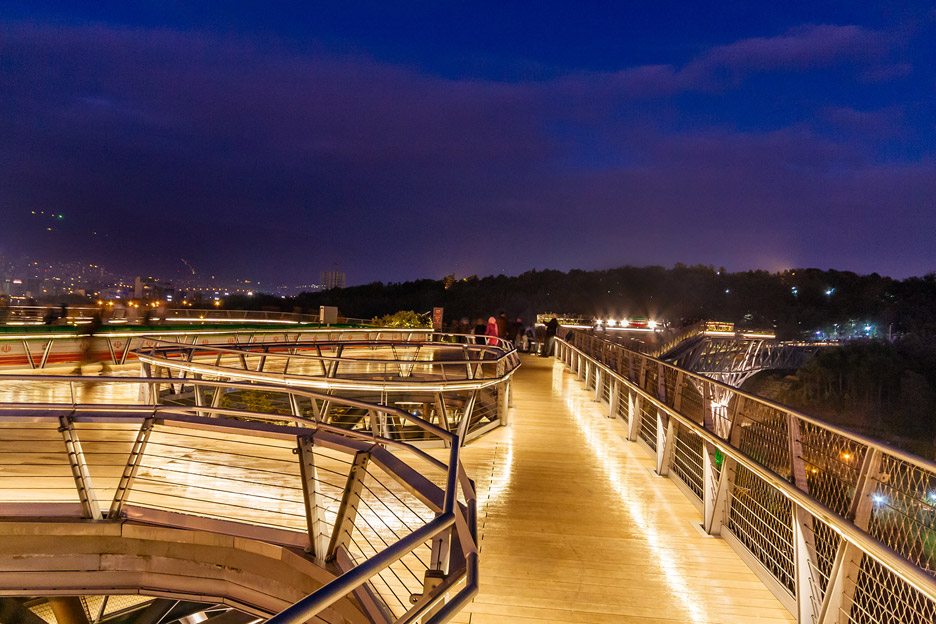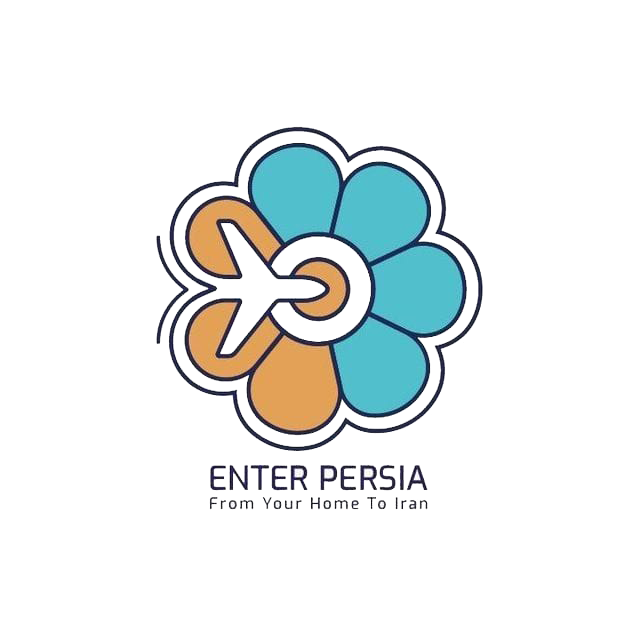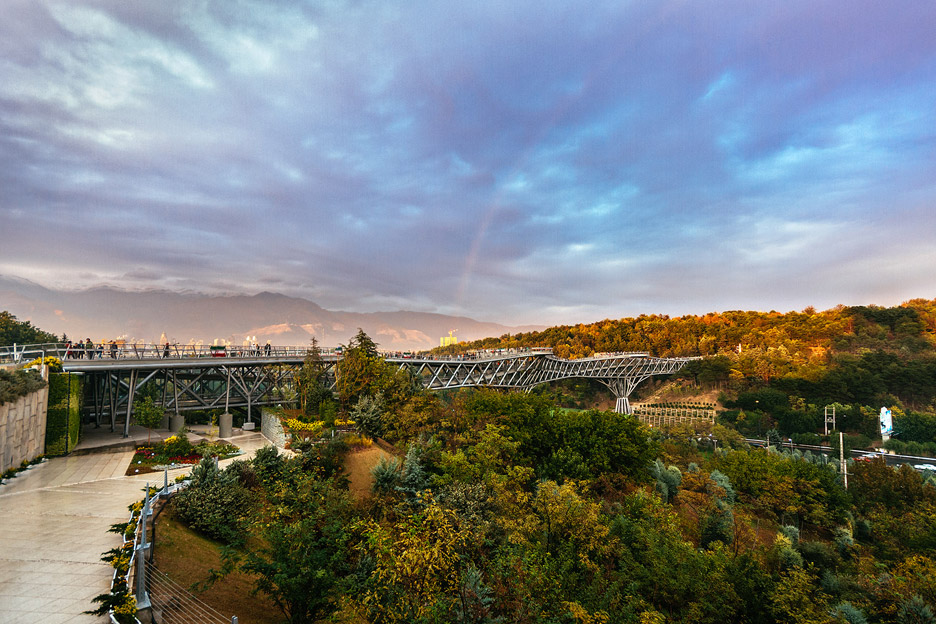Nestled in the vibrant heart of Tehran, the capital of Iran, stands an extraordinary feat of architecture known as the Tabiat Bridge. More than just a functional crossing, this marvel represents a harmonious blend of human innovation and the natural environment. Completed in 2014, the Tabiat Bridge is a contemporary architectural masterpiece seamlessly merging with the landscape, offering a unique and breathtaking experience for both locals and visitors. This article explores the bridge’s history, design, and significance, emphasizing its role as a cultural landmark and a symbol of sustainable urban development.
Architect
The mastermind behind the Tabiat Bridge is the Iranian architect Leila Araghian. Her winning design, chosen in an international architectural competition held by the Tehran Municipality in 2008, stood out for its innovation and sustainability. Araghian’s vision aimed to achieve harmony between the built environment and the natural world, evident in the bridge’s organic, leaf-and-tree-inspired form. With three levels catering to pedestrians, cyclists, and sightseers, the bridge seamlessly connects Taleghani Park and Abo-Atash Park in northern Tehran. Construction commenced in 2010, culminating in the official inauguration on October 3, 2014. Leila Araghian’s design and the successful realization of the Tabiat Bridge have garnered international recognition, solidifying her status as one of Iran’s prominent contemporary architects.
Architecture
The Tabiat Bridge, spanning 300 meters, holds the distinction of being the largest non-motorized bridge in the Middle East. Drawing inspiration from Iranian bridges like the Si O Se Pol Bridge and the Khaju Bridge, its three-story structure stands 40 meters above the ground, weighing approximately 2000 tons. The bridge comprises 14,000 steel pieces, intricately assembled at a height of 40 meters. Covering an approximate area of 7000 square meters, it includes 480 square meters dedicated to restaurants and coffee shops, along with 720 square meters of green spaces. Utilizing the highest quality materials and adhering to stringent safety standards during construction, the Tabiat Bridge is expected to endure for up to 100 years, displaying resilience against natural disasters such as earthquakes, even those exceeding 7 on the Richter scale.
Significance of Tabiat Bridge
The Tabiat Bridge holds significance for two primary reasons. Firstly, it stands as a remarkable testament to contemporary architectural prowess, seamlessly intertwining human-made structures with the natural surroundings. Crafted by Leila Araghian, its organic design, innovative three-tier structure, and use of sustainable materials have garnered global acclaim and prestigious awards, establishing it as an emblem of modernity and architectural ingenuity.
Secondly, the bridge plays a pivotal role in advancing sustainable urban development in Tehran. Functioning as a pedestrian bridge, it promotes eco-friendly transportation by providing a secure and accessible pathway for pedestrians and cyclists. Furthermore, the inclusion of greenery and native plants fosters biodiversity, enhancing the city’s air quality. The Tabiat Bridge serves not only as a cultural landmark but also as a source of pride for the residents of Tehran, offering a cherished gathering place for socializing amidst the city’s natural surroundings.
Cultural and Social Impact
Beyond its architectural and environmental importance, the Tabiat Bridge holds profound cultural and social value for the people of Tehran. Families, couples, and friends flock to the bridge, making it a favored spot for quality time together. Its strategic location between two major parks encourages people to connect with nature, providing a welcome escape from the bustling urban lifestyle. Moreover, the bridge symbolizes Iran’s burgeoning contemporary architecture and commitment to sustainability, earning accolades such as the Aga Khan Award for Architecture in 2016 and international recognition for its design excellence and positive impact on urban life.
Tabiat Bridge Restaurants and Food Court
The Tabiat Bridge’s cafes are renowned for delightful breakfast options, making it a must-visit for breakfast enthusiasts. Key establishments include:
- Melal Cafe Restaurant: Situated on the bridge’s west side, this restaurant is a favorite among tourists. Known for its self-service breakfasts, it offers a diverse array of morning delights within a roofed structure surrounded by glass walls, providing a captivating view.
- VIP Cafe: Located on the bridge’s lower floor, this charming cafe offers a spectacular terrace with panoramic views. It is celebrated for its breakfast offerings and features a menu encompassing both Iranian and international dishes.
- Tabiat Bridge Food Court: Positioned in the eastern part of the bridge, the food court boasts a variety of Iranian and cultural dishes. Set in an open environment, it caters to diverse tastes, allowing visitors to enjoy their favorite meals while taking in the scenic surroundings.
Bridge Evaluations
The Tabiat Bridge in Tehran has garnered numerous favorable assessments for its impressive architecture and captivating design, establishing itself as a popular destination for both locals and tourists alike. Reviewers commend the bridge’s distinctive three-tier structure, providing varied perspectives of the surrounding area.
A recurring highlight in these reviews is the breathtaking view offered by the Tabiat Bridge. Visitors express admiration for the panoramic sight of the parks and Alborz mountains visible from the bridge. The bridge’s graceful curvature and incorporation of wooden panels foster a seamless connection with nature, creating a tranquil and serene environment for leisure and scenic appreciation. Furthermore, the inclusion of seating areas and green spaces in the bridge’s design allows visitors to unwind and savor the ambiance. Overall, the Tabiat Bridge is widely acclaimed for its exceptional architecture, expansive views, and serene atmosphere, solidifying its status as a must-visit destination in Tehran.
Tabiat Bridge Admission
The Tabiat Pedestrian Bridge operates as a public facility, requiring no entrance fee or ticket for pedestrians to traverse. It remains open to the public throughout the week, accessible without charge. However, if visitors wish to avail themselves of the restaurants or coffee shops on the bridge, a fee is applicable. Tourists and enthusiasts can explore this captivating bridge from 6 am to 12:30 am daily.
Optimal Time to Experience Tabiat Bridge in Iran
The most favorable periods to visit the Tabiat Bridge are during the spring (April to June) and autumn (September to November) seasons. These months offer mild and pleasant weather, conducive to outdoor activities, allowing visitors to stroll leisurely across the bridge and relish the picturesque surroundings. Additionally, clearer skies during spring and autumn enhance visibility from the bridge’s observation deck, providing clearer views of the Alborz Mountains and the city skyline. For a more tranquil experience with fewer crowds, weekdays or early mornings are recommended, as weekends and holidays tend to attract larger numbers of visitors. Opting for off-peak times allows individuals to fully appreciate the bridge’s architectural splendor and immerse themselves peacefully in its serene atmosphere.
Last Word
The Tabiat Bridge serves as a testament to architecture’s ability to forge harmony between humanity and the natural environment. Its seamless integration with the landscape, dedication to sustainability, and cultural significance exemplify visionary urban development. As the sun sets, casting a warm glow over the city, the Tabiat Bridge stands not merely as a physical structure but as a beacon of hope, inspiring future generations to construct a more sustainable and harmonious world through creativity, innovation, and a profound respect for nature. It symbolizes a connection that celebrates our shared humanity, urging us to build bridges that unite us with our surroundings and with each other.





For the reason that the admin of this site is working, no question very
rapidly it will be famous, due to its feature contents.
My web-site graphics
Oh my goodness! Amazing article dude! Thank you, However I am
having issues with your RSS. I don’t know why I can’t join it.
Is there anyone else getting identical RSS problems? Anybody who knows the
solution will you kindly respond? Thanks!!
Here is my web page … web site
You really make it appear so easy along with your presentation however I to find this topic to be really one thing that I believe I might never understand.
It sort of feels too complicated and extremely wide for me.
I am taking a look ahead to your next submit, I’ll attempt to get the
hang of it!
Explainer Video Company India – explainervideo.in https://postquickads.com/464/posts/3-Services/27-Other/1928976-Explainer-Video-Company-India.html